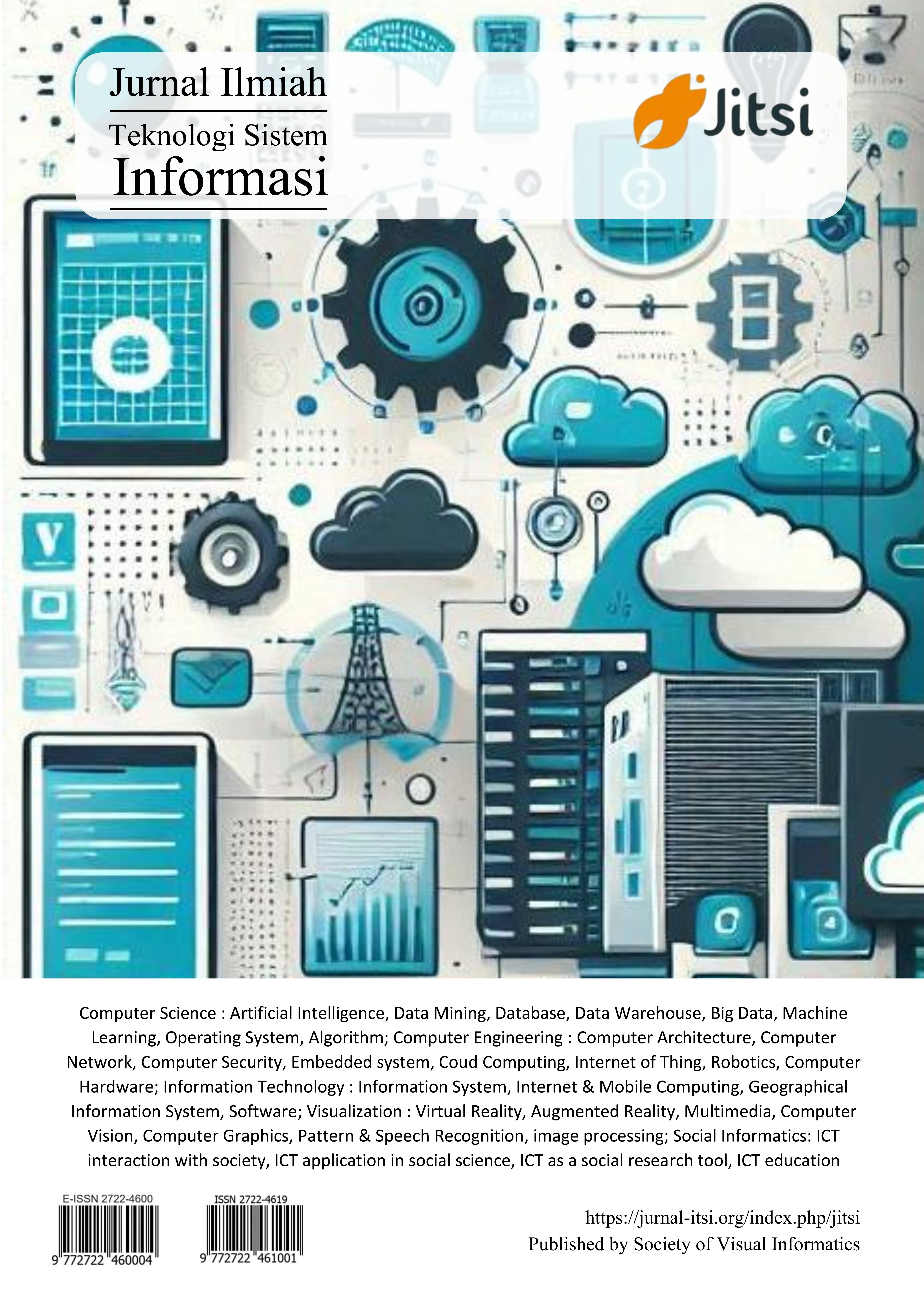Analysis of the Relationship Between Technostress and Information Security Awareness in High School Teachers
Main Article Content
Abstract
Technostress is a phenomenon that has recently occurred frequently due to the significant development of information technology. Post COVID 19 pandemic, many sectors have transformed to information technology. As a result, many individuals who feel not fully prepared to use technology feel overwhelmed so they are vulnerable to experiencing technostress. On the other hand, as information technology develops, the risk of information security awareness is also increasingly vulnerable. This can be proven by the increasing number of data leakage cases that occur. This study aims to determine the relationship and influence between technostress and information security awareness. This study adapts three domains from HAIS-Q, namely password management, application use, and email use. This research uses PLS SEM method with 84 respondents. The results of this study prove that technostress related to password management and technostress related to email use have a negative and significant effect on information security awareness. While technostress related to the use of applications has a negative but insignificant effect on information security awareness.
Article Details

This work is licensed under a Creative Commons Attribution-ShareAlike 4.0 International License.
References
[2] L. Li, “Technostress inhibitors and creators and their impacts on university teachers’ work performance in higher education,” Cogn. Technol. Work, vol. 23, no. 2, pp. 315–330, 2021, doi: 10.1007/s10111-020-00625-0.
[3] Z. N. Khlaif, “Correction to: Impact of Technostress on Continuance Intentions to Use Mobile Technology (The Asia-Pacific Education Researcher, (2022), 10.1007/s40299-021-00638-x),” Asia-Pacific Education Researcher, vol. 32, no. 2. p. 163, 2023. doi: 10.1007/s40299-022-00646-5.
[4] I. Hwang and O. Cha, “Examining technostress creators and role stress as potential threats to employees’ information security compliance,” Computers in Human Behavior. Elsevier, 2018. [Online]. Available: https://www.sciencedirect.com/science/article/pii/S0747563217307033?casa_token=nAF1S67Swn0AAAAA:3nrbMQgoP7abi8kj7eQab-s_Aqb9WZQMjfyDhT1jcapP1gp1DqU2TETmkvBTGebtd2PqHq1I
[5] M. E. Bahamondes-Rosado, L. M. Cerdá-Suárez, and ..., “Technostress at work during the COVID-19 lockdown phase (2020–2021): a systematic review of the literature,” Frontiers in …. frontiersin.org, 2023. doi: 10.3389/fpsyg.2023.1173425.
[6] C. Conrad, Q. Deng, I. Caron, O. Shkurska, P. Skerrett, and B. Sundararajan, “How student perceptions about online learning difficulty influenced their satisfaction during Canada’s Covid-19 response,” Br. J. Educ. Technol., vol. 53, no. 3, pp. 534–557, 2022, doi: 10.1111/bjet.13206.
[7] Z. Wang, L. Zhang, X. Wang, L. Liu, and C. Lv, “Navigating Technostress in primary schools: a study on teacher experiences, school support, and health,” Front. Psychol., vol. 14, no. November, pp. 1–16, 2023, doi: 10.3389/fpsyg.2023.1267767.
[8] M. Tarafdar, Q. Tu, B. S. Ragu-Nathan, and T. S. Ragu-Nathan, “The impact of technostress on role stress and productivity,” J. Manag. Inf. Syst., vol. 24, no. 1, pp. 301–328, 2007, doi: 10.2753/MIS0742-1222240109.
[9] K. Wang, Q. Shu, and Q. Tu, “Technostress under different organizational environments: An empirical investigation,” Comput. Human Behav., vol. 24, no. 6, pp. 3002–3013, 2008, doi: https://doi.org/10.1016/j.chb.2008.05.007.
[10] F. K. Mupila, H. Gupta, A. University, and A. Bhardwaj, “An Empirical Study on Cyber Crimes and Cybersecurity Awareness,” pp. 1–24, 2023, [Online]. Available: https://doi.org/10.21203/rs.3.rs-3037289/v1
[11] G. Sarkar and S. K. Shukla, “Behavioral analysis of cybercrime: Paving the way for effective policing strategies,” J. Econ. Criminol., vol. 2, no. October, p. 100034, 2023, doi: 10.1016/j.jeconc.2023.100034.
[12] T. N. Nguyen, H. Chi, M. City, and V. Correspondence, “A review of cyber crime,” J. Soc. Rev. Dev., vol. 2, no. 1, pp. 1–3, 2023, [Online]. Available: www.dzarc.com/social
[13] M. Zwilling, G. Klien, D. Lesjak, Ł. Wiechetek, F. Cetin, and H. N. Basim, “Cyber Security Awareness, Knowledge and Behavior: A Comparative Study,” J. Comput. Inf. Syst., vol. 62, no. 1, pp. 82–97, 2022, doi: 10.1080/08874417.2020.1712269.
[14] A. Kovacevic, N. Putnik, and O. Toskovic, “Factors Related to Cyber Security Behavior,” IEEE Access, vol. 8, pp. 125140–125148, 2020, doi: 10.1109/ACCESS.2020.3007867.
[15] D. R. Rahadi, PENGANTAR PARTIAL LEAST SQUARES STRUCTURAL EQUATION MODEL (PLS-SEM) 2023, Cetakan Pe. Tasikmalaya: LENTERA ILMU MADANI, 2023.

